
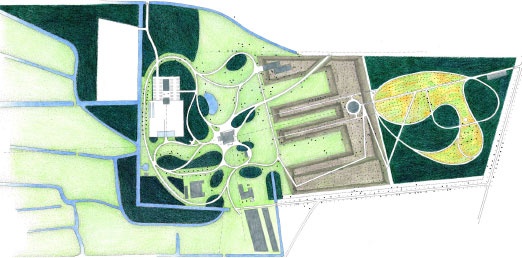
After the Second World War, Baron van Lynden lent the section of the park north of the Stationsweg for use for the world-famous Keukenhof flower gardens. The rest of the park and the castle were somewhat neglected. When he died the estate was left to a foundation oriented towards long-term preservation, with an emphasis on nature and culture rather than on mass tourism, in contrast to ‘the Keukenhof’.
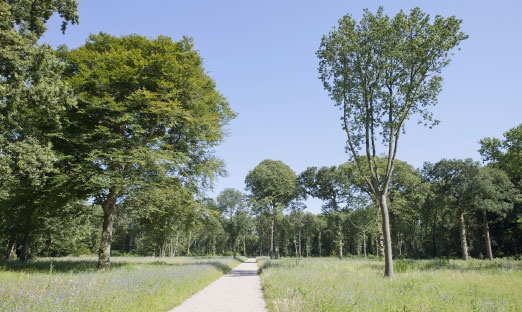
To this end a master plan for the restoration of the park’s layout has been drawn up, articulating the various sections of the park in relation to one another and providing space for special events and buildings related to culture.
Castle Keukenhof is surrounded by a small landscape park designed by Jan David Zocher. In the restoration plan this layout is to be somewhat simplified in order to accommodate its new functions and more rational management.
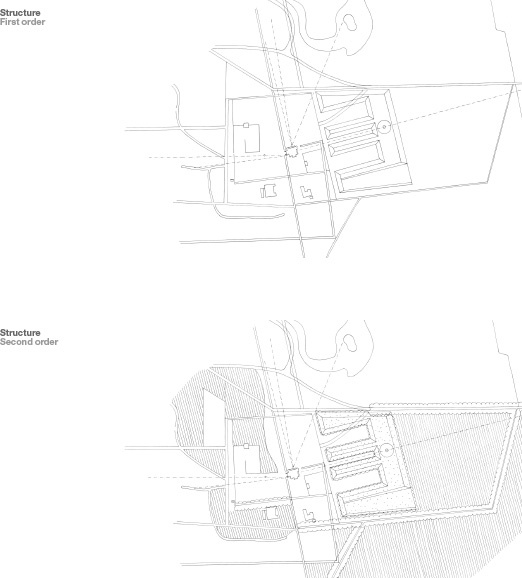

To the east of this lies a rather unique formal layout, consisting of a rectilinearly modelled earthwork in the shape of a trident. On top of this is a conical hillock, Meerzicht. This seventeenth-century earthwork became entirely covered in woods over the centuries, and Zocher landscaped its west side somewhat.
The easternmost section of the layout is a levelled dune landscape where the woods were cut down for military defence reasons during the Second World War. This is the most natural section of the layout.

Contrary to the original planning, this eastern section has been addressed first, in order to allow temporary exhibitions to be organized immediately.
In the heart of the initially relatively uniform and dense woods, most of the trees and shrubs have been removed to make room for a tree meadow lined with flowering grassland. The woods around it have been made even denser by the introduction of evergreen vegetation. This has created a much more varied woodland containing an enclosed space for art.
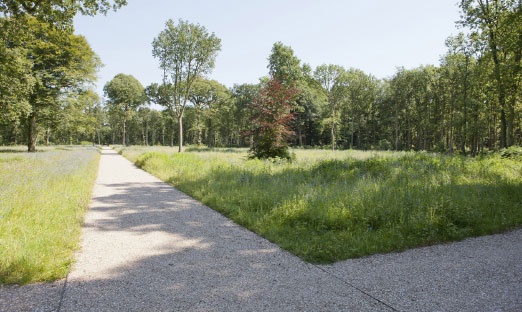
The shape of the open space is largely defined by the new system of paths connecting the remnants of old paths into a single coherent whole. Two further new paths do not feature a curved course: the main path along the axis of the formal layout, running from the castle to the new east entrance via the top of the now restored conical hillock, Meerzicht, and a zigzag path that guarantees access for disabled visitors, as each time a height difference must be overcome the path twists and then runs up or down the existing embankment.
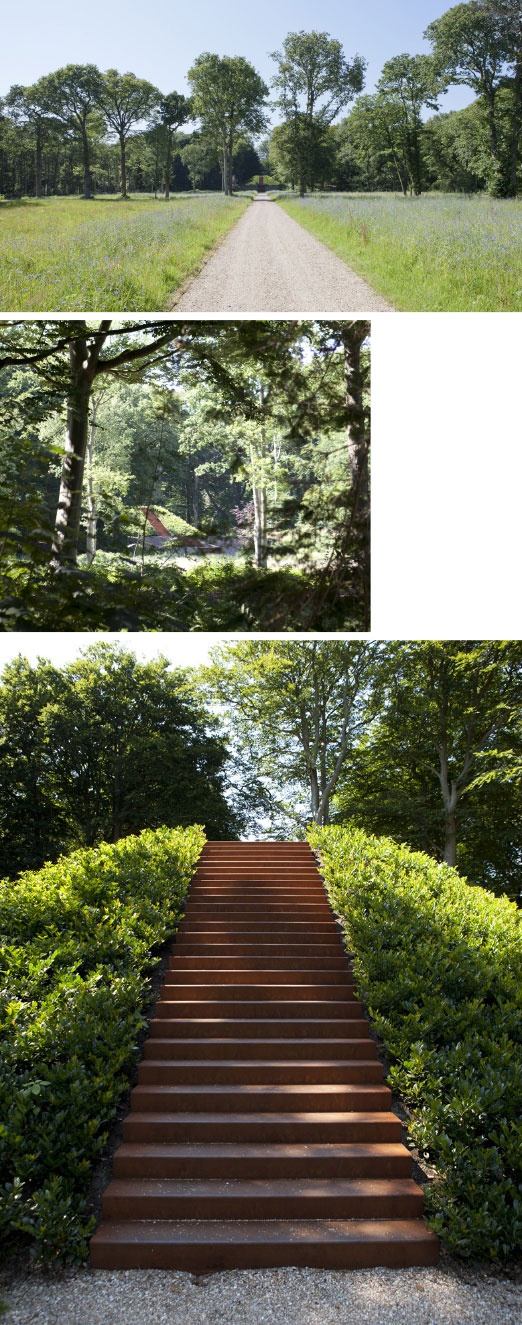
Client
Foundation Kasteel Keukenhof
In collaboration with
Francien van Kempen
Janet van Bergen
Bureau Maan
Photography
Emilio Troncoso Larrain